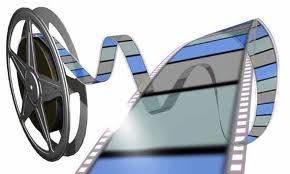 Twas the day after Christmas and all through the house, everyone was sleeping except for me. The reality is that I’ve not blogged in two days because of a deadly combination of holiday festivities and a horrible case of bronchitis. So, this morning I’m sitting at my computer and cleaning out my email inbox looking for blog ideas. There are scraps of ideas everywhere I look, but nothing cohesive was coming together until I opened an email from Tom Ahern, who is one of the biggest and brightest names in the field of donor communications.
Twas the day after Christmas and all through the house, everyone was sleeping except for me. The reality is that I’ve not blogged in two days because of a deadly combination of holiday festivities and a horrible case of bronchitis. So, this morning I’m sitting at my computer and cleaning out my email inbox looking for blog ideas. There are scraps of ideas everywhere I look, but nothing cohesive was coming together until I opened an email from Tom Ahern, who is one of the biggest and brightest names in the field of donor communications.
Tom’s email newsletter was all over the road. It was speed dating for fundraising professionals.
The one topic that jumped off the page at me was something he termed “Donors Remorse.” Here is how he described it:
“But there is also a phenomenon let’s call ‘donor’s remorse.’ It’s just like buyer’s remorse: an oppressive feeling of disappointment and doubt that you’ve made a bad purchase decision. It’s a feeling of potential loss that happens immediately and automatically as soon as the first gift is completed. I’m feeling it right now. I just gave $500 of my hard-earned income to a political candidate whom I trust and admire. And yet I wonder….”
Have you ever felt donors remorse? I have, but I’ve never really processed it this way. So, reading Tom’s words got my brain engaged this morning (which kind of felt nice after days of existing in a fuzzy cold medicine state of being).
 I’m not sure about you, but every time I’ve experienced donors remorse, it has been because I made a contribution out of a sense of obligation. Here are a few examples:
I’m not sure about you, but every time I’ve experienced donors remorse, it has been because I made a contribution out of a sense of obligation. Here are a few examples:
- A friend asked me to make a donation to a charity because he serves on their board of directors
- A friend asked me to make a political contribution because they were running for office
- My neighbor’s son was selling stuff for his school’s fundraiser
The reason why donors remorse is a dangerous concept in fundraising circles is because it ties directly back to the idea of donor retention. When making a remorseful gift, the odds of the charity getting gift number two from me is extremely low. Since the non-profit organization most likely doesn’t know this (because they can’t read my mind), they are most likely about to embark on an expensive journey of trying to renew my support.
So, I’ve been thinking about ways to solve this problem this morning, and the answer surprised because it was remarkably simple.
Train your volunteers on how to use your case for support!
The reason why this work and does so every time is because it gets to the root of the problem.
In the three real-world examples I provided, the reason why I experienced donors remorse was because “The Ask” did not:
- paint a picture of need
- tell me how supporting the agency, school or cause would help address the need or make the world a better place
- inspire me
We need to stop asking our volunteers to go out into the world with a fistful of pledge cards to ask their friends to support their cause without appropriate training and support. It also needs to be more than just a quick training on how to use the organization’s case statement.
I can’t tell you how many times I’ve facilitated a campaign kickoff meeting and walked volunteers through the case for support only to find out they don’t use it. They fall back on the familiar fundraising pitch where they ask their friends to do them a solid favor by supporting their favorite charity.
Let’s treat our volunteers like the adults they actually are. Let’s take our trainings a step further by talking about:
- the concept of donors remorse
- the reasons why this happens
- the business costs associated with it happening
- how to avoid it
If volunteers knew they could help you avoid spending lots of donor renewal dollars in a wasted effort by simply making the ask in the right way, I think many more of them would do so.
I dunno . . . what do you think? Has the cold medication rotted my brain?
I love Tom Ahern, and I think you will, too. If you want to check out his free e-newsletter, please click here and have a look around Tom’s site.
Here’s to your health!
Erik Anderson
Founder & President, The Healthy Non-Profit LLC
www.thehealthynonprofit.com
erik@thehealthynonprofit.com
http://twitter.com/#!/eanderson847
http://www.facebook.com/eanderson847
http://www.linkedin.com/in/erikanderson847



